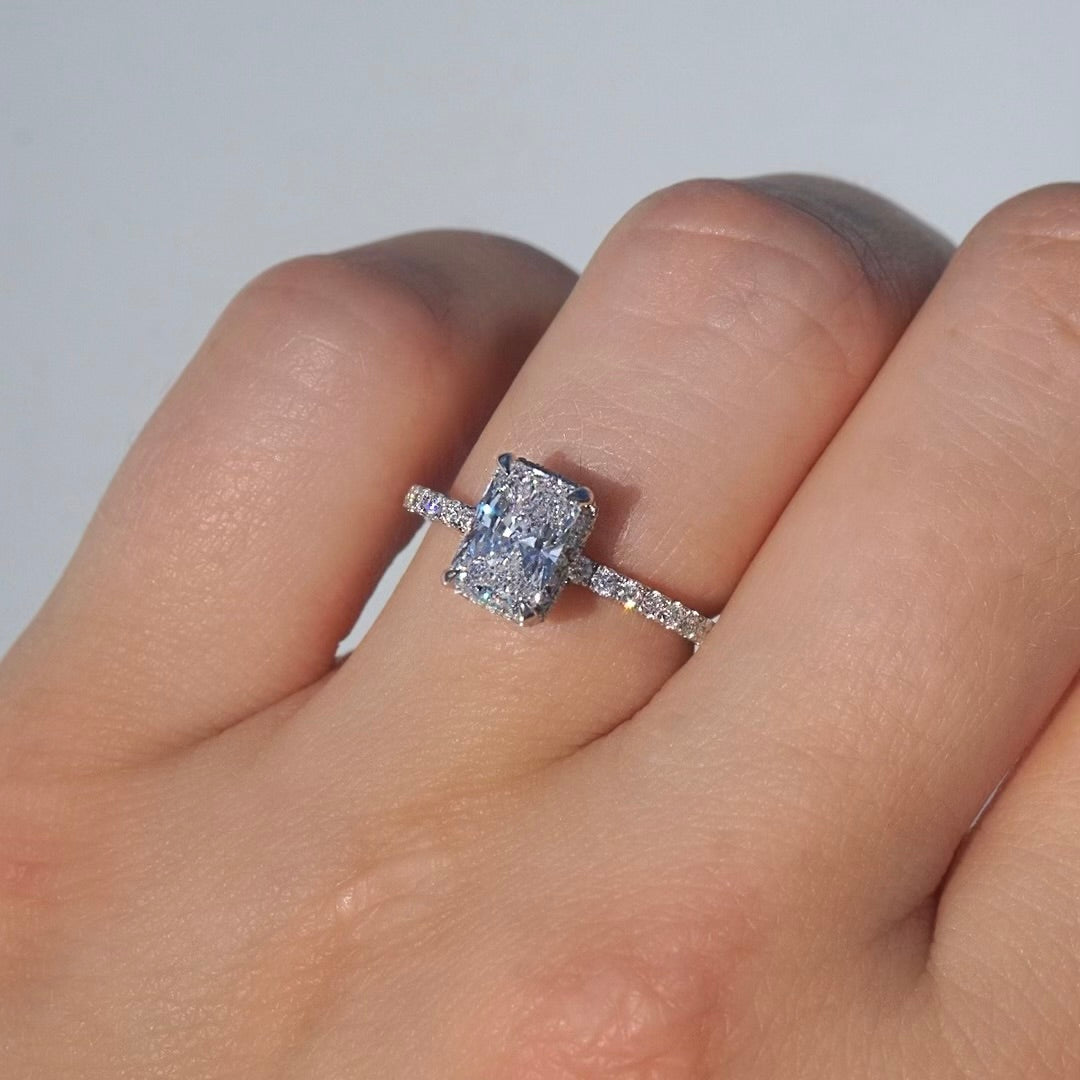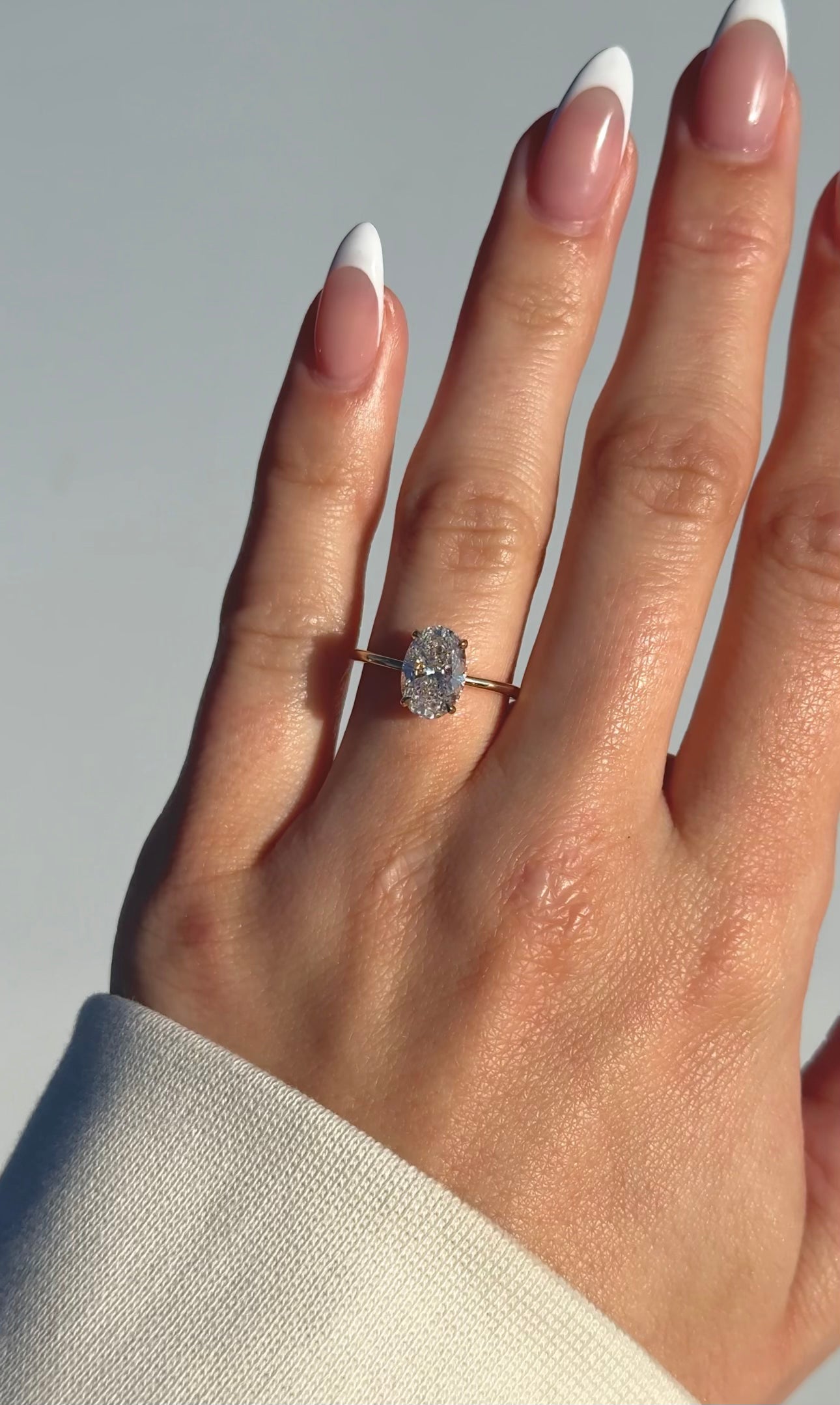The popularity of lab-grown diamonds has surged in recent years, making them a compelling option for those in quest of a diamond wedding/engagement ring.
It's challenging to differentiate between lab-grown and naturally occurring (mined) diamonds. The distinctions arise only in their pricing, formation processes, and their respective humanitarian and environmental implications.
Let’s explore the fascinating world of diamonds as we weigh the pros and cons of lab-grown versus mined diamonds. Make an informed choice for your next sparkling investment through our intuitive comparison guide.
Understanding Lab-Grown and Mined Diamonds
As the name suggests, these diamonds are produced in a controlled laboratory environment through advanced technology. In contrast, the naturally-occurring diamonds are extracted from the earth through mining after volcanic eruptions carry them closer to the Earth's surface. Mother Nature crafted these diamonds from carbon atoms deep under intense high pressure and heat over a million years ago. The allure of traditional diamonds lies in their rarity, given that diamonds formed on the Earth are limited.
Scientists replicate this natural process to produce lab-grown diamonds in a considerably shorter time, yielding a pure diamond.
In our Happy Jewelers laboratory, we emulate the same process through the CVD (Chemical Vapor Deposition) technique, while others also use the HPHT method (High-Pressure High Temperature).
CVD diamonds typically register as genuine when tested with a diamond tester, while HPHT diamonds do not exhibit the same response and may not be identified as real through this testing method.
Making of Lab-Grown Diamonds
In the initial stage, a minute diamond seed, known as a "seed crystal," is carefully positioned within a small sealed chamber. This chamber is filled with heated carbon gases as part of the diamond-growing process.
Intense pressure and heat are applied to the diamond slice, replicating the conditions of natural diamond formation. Carbon layers accumulate on the seed crystal, forming a rough-shaped diamond stone. This resulting diamond is then carefully hand-cut and refined to achieve its final look. Top of Form
Are Lab-Grown Diamonds the Same as Mined?
A very prevalent misconception is that lab-grown diamonds are replicated and fake with a belief that they possess other chemical compositions compared to mined diamonds. These diamonds are occasionally labeled as cultured, synthetic, and man-made, which confuses a lot of people. Even though they are genuine diamonds, lab-grown diamonds are sometimes mistaken for stimulants such as cubic zirconia.
Lab-grown diamonds are real and virtually indistinguishable from earth-mined diamonds in every aspect, the key difference being their origin, cultivated in a laboratory. They have the same brilliance and shine as natural diamonds, meeting the desired standards for visual appeal. Lab-grown and mined diamonds are alike in pure carbon composition. Both exhibit identical physical, optical, and chemical properties with the same clarity, durability, and hardness level.
The main difference between lab-grown and natural diamonds is the presence of nitrogen. Natural diamonds often contain traces of nitrogen, which become trapped in the diamond's crystal lattice during formation. In contrast, lab-grown diamonds typically lack this nitrogen content.
Lab-grown diamonds are also distinguished from mined diamonds by a microscopic laser mark that serves as a unique identifier. A jeweler can detect it using particular magnifying gear as this mark is invisible to the naked eye.
Are Lab-Grown Diamonds Certified Similar to Natural Diamonds?
Yes, lab-grown diamonds undergo certification and grading processes similar to those for natural diamonds. Certification standards play a crucial role in offering consumers vital details about a diamond's cut, clarity, color, and carat weight.
The Federal Trade Commission officially acknowledged lab-grown diamonds as authentic diamonds in 2018. Reputable gemological laboratories like the Gemological Institute of America (GIA) and the International Gemological Institute (IGI) offer comprehensive grading and certification services for lab-grown diamonds.
Moreover, the United States FTC (Federal Trade Commission) classifies a diamond as a mineral consisting of pure carbon. Hence, according to the FTC, lab-grown diamonds are acknowledged as genuine diamonds since they meet the definition of being composed of pure carbon.
Cost Disparity Between Mined and Lab-Grown Diamonds
The expenses associated with cutting, polishing, and inspections are equivalent for both lab-grown and natural diamonds. However, creating diamonds in a laboratory is a cost-effective process as compared to the heavy mining expenditure to obtain natural diamonds. This makes lab-grown diamonds to be 40-50% less expensive than mined diamonds, allowing you to acquire a considerably larger diamond.
If your priority is not centered on the resale diamond value, opting for a Lab-Grown Diamond can be a viable and budget-friendly alternative to acquiring a pricier natural diamond. In simpler terms, choosing a lab-grown diamond provides more value for your money.
Nevertheless, it's important to highlight that the pricing of lab-grown diamonds can fluctuate based on factors such as quality, size, and other considerations.
Sustainability and Ethical Concerns
The process employed to produce lab-grown diamonds drastically reduces the growth time, transitioning from billions of years in natural diamond formation to just a couple of months.
These beautiful diamond pieces are cultivated in certified labs. The production process of lab-grown diamonds can be closely monitored and controlled, allowing for better traceability and transparency in the supply chain.
Another plus point is that lab-grown diamonds offer both environmental sustainability and social ethics in their production as they’re not mined from the Earth's surface. Mining can have significant environmental consequences, including habitat disruption, soil erosion, and water pollution.
The process of mining natural diamonds is not sustainable, as the Earth cannot replenish as rapidly as extraction occurs. In contrast, lab-grown diamonds emerge as a more sustainable and renewable option to meet market demand.
However, it is worth noting that lab-grown diamonds also have their sustainability considerations. The CVD method consumes as much energy as it costs to power a home for one month.
Despite ongoing efforts to enhance the diamond mining industry's environmental and humanitarian practices, selecting a lab-grown diamond remains the most effective way to guarantee a conflict-free and ethically sourced engagement ring.
Opting for a lab-grown diamond offers the advantage of an ethically sourced jewel. Unlike many natural diamonds associated with violent histories and labeled as blood diamonds, lab-grown diamonds alleviate ethical concerns when shopping for diamonds.
Value and Rarity of Lab-Grown Diamonds: A Consideration
Natural diamonds have a long-established market and are often perceived as rare and valuable due to their geological formation over millions of years. The rarity of a diamond significantly shapes its value. As lab-grown diamonds can be manufactured in fairly large quantities under a controlled environment, they lack the rarity associated with naturally occurring diamonds.
While lab-grown diamonds may offer an initial cost advantage, they may not be a favorable investment for asset retention or resale value in the long run. Lab-grown diamond prices may experience depreciation over time.
We believe that the primary value of a diamond, whether natural or lab-grown, often lies in its emotional significance and the sentiment attached to it rather than its resale value.
On the other hand, these diamonds open the door for innovation and customization, enabling the crafting of unique and specialized diamonds that may be challenging to find in natural settings.
Lab-grown diamonds exhibit consistent quality, as they are created under controlled conditions, minimizing variations in color, transparency, and other characteristics. Some consumers simply prefer the idea of lab-grown diamonds due to their modern and environmentally conscious characteristics.
The Bottom Line
In conclusion, the choice between the two depends on individual values, budgets, preferences, and priorities. As technology advances and consumer awareness grows, the diamond market continues to adapt, offering diverse options to diamond enthusiasts.
Whether it's the timeless charm of a natural mined diamond or the sustainable appeal of a lab-grown jewel, each option has its unique advantages and considerations, from ethical and environmental factors to cost and rarity.




